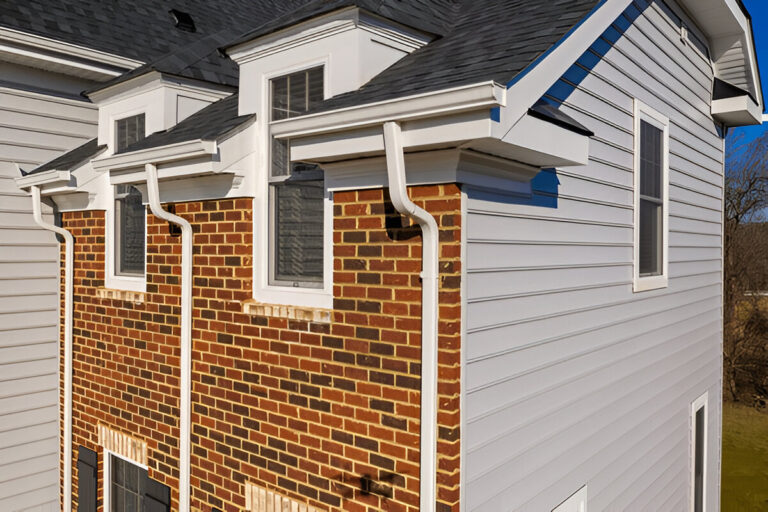Your home’s exterior is its handshake with the world—a first impression that speaks volumes. One often overlooked yet powerful way to elevate that impression is with decorative gable vents. While traditionally functional for attic ventilation, today’s gable vents double as beautiful design features that give your home personality, balance, and architectural flair.
Whether you’re building a new home or refreshing an existing one, this guide will walk you through everything you need to know about decorative gable vents—and why they’re a smart upgrade.
Why First Impressions Matter: The Power of Curb Appeal
We’ve all experienced it—that moment when a house just feels “put together.” Curb appeal isn’t just about landscaping or a fresh coat of paint; it’s about the finishing details that show intention and style. Decorative gable vents serve as one of those details, adding symmetry, charm, and a polished aesthetic that turns heads and wins hearts.
A well-designed exterior can increase your home’s resale value, but more importantly, it can make you feel prouder every time you pull into the driveway.
What Are Gable Vents and Why Should You Care?
Gable vents are ventilation openings located on the gable ends (the triangular portions) of your home’s roof. Originally designed to allow fresh air into the attic and push heat or moisture out, these vents play a role in maintaining energy efficiency and preventing damage from mold or mildew.
The reason you should care? Because with the right design, they go from invisible necessity to statement-making feature.
From Functional to Fabulous: The Rise of Decorative Gable Vents
In older homes, gable vents were purely utilitarian—often simple slatted openings that blended into the background. Today’s homeowners are reimagining them as decorative elements. Manufacturers have caught on, offering a wide variety of decorative gable vents that enhance both form and function.
From elegant arches to custom laser-cut patterns, these vents now reflect your personal style and architectural taste, while still helping your home breathe.
Gable Vents 101: What They Do and How They Work
Gable vents are part of a home’s passive ventilation system. As hot air rises, it escapes through vents near the top of the attic, while cooler air enters through lower soffit vents. This cycle helps regulate attic temperature and reduce strain on your HVAC system.
Decorative vents maintain this function, with slats, louvers, or internal screens built into their design. When installed correctly, they’re just as effective as traditional models.
Ventilation with Style: Balancing Function and Aesthetic
Not all decorative elements serve a purpose—but decorative gable vents do. Modern designs allow for both airflow and elegance. Many are engineered with built-in moisture barriers, insect screens, and proper spacing to allow ventilation without sacrificing beauty.
It’s a rare win-win in home improvement: aesthetic value and energy efficiency in one feature.
Decorative vs. Traditional Gable Vents: What’s the Difference?
Traditional gable vents are simple, utilitarian, and often go unnoticed. They’re functional, but they don’t add anything to your home’s exterior style.
Decorative gable vents, on the other hand, are designed to enhance. They come in a variety of shapes, finishes, and materials that match or elevate the architectural character of your home. Think of them as trim for your roof—subtle but striking details that draw the eye.
Elevating Your Home’s Personality
Your home is a reflection of your taste, and every detail—from the front door to the roofline—plays a role in telling that story. Gable vents, especially when chosen thoughtfully, can reinforce your home’s character. A vintage-style vent might evoke historic charm, while a sleek, minimalist design aligns with modern architecture.
Architectural Flair: Complementing Your Home’s Style
Your home’s architecture should guide your vent selection. Colonial and Victorian homes benefit from round or elliptical vents with ornate trim. Craftsman homes look best with bold, geometric vents in natural finishes. For contemporary builds, square or triangular vents with clean lines do the trick.
Matching Gable Vents to Rooflines, Siding, and Trim
One of the biggest aesthetic wins comes when your gable vent seamlessly integrates with your roof’s pitch and your home’s exterior palette. Matching trim thickness, color tones, and vent angles to your rooflines and siding creates a cohesive, designer-quality look.
Wood, Vinyl, or Metal? Pros and Cons of Each
When choosing a decorative gable vent, material matters. Here’s a breakdown:
- Wood: Beautiful and authentic, but requires regular sealing or painting. Great for rustic or traditional homes.
- Vinyl: Lightweight, weather-resistant, and low maintenance. Vinyl is versatile and available in many pre-finished colors.
- Metal: Durable and fire-resistant. Ideal for industrial or modern homes, though often more expensive.
Each has its place—choose based on durability needs, budget, and aesthetic preferences.
Low-Maintenance Options That Still Look Luxe
For those who want the look without the upkeep, vinyl or composite materials offer the best of both worlds. These materials mimic wood grain and detailed craftsmanship, but they’re resistant to warping, cracking, or fading.
That means more time enjoying your beautiful home—and less time maintaining it.
Eco-Friendly Materials for the Sustainability-Minded Homeowner
More brands are offering decorative gable vents made from recycled PVC, fiber cement, or sustainable wood products. These eco-conscious options offer the same style, durability, and performance, while reducing your home’s environmental footprint.
From Arched to Octagonal: Popular Gable Vent Shapes
Gable vents come in a variety of shapes, and each shape lends itself to different architectural styles:
- Round: Great for traditional or colonial homes.
- Octagonal: Adds a unique, vintage charm.
- Triangular: Perfect for contemporary homes or steep-pitched roofs.
- Half-moon (eyebrow): Softens sharp lines and adds elegance.
Don’t just follow trends—choose a shape that harmonizes with your home’s lines.
Custom Designs That Reflect Your Personal Taste
Want something no one else on the block has? Many manufacturers offer custom vents—where you choose the shape, material, color, and even carved designs. Some homeowners opt for family initials, floral motifs, or coastal themes to reflect their lifestyle.
Customization adds a level of luxury and individuality that off-the-shelf models simply can’t match.
Using Color to Accentuate or Blend
Color choices for your gable vent can make it pop—or help it blend. Match the trim for a subtle look, or contrast against the siding for bold visual interest.
Light-colored vents against dark exteriors stand out beautifully. Dark vents on light homes offer a more grounded, architectural feel.
Pre-Finished Options vs. Painting It Yourself
If you want convenience, go with a pre-finished vent in a color that matches your exterior. These are UV- and weather-resistant, meaning less fading over time.
If you prefer a perfect match or plan to change colors later, look for paintable options. Use high-quality exterior paint to protect the vent and extend its life.
Not Just for Attics: Creative Placement Ideas
Gable vents aren’t limited to attic walls. Creative homeowners are placing them:
- On detached garages for design continuity
- On dormers for extra ventilation and charm
- On sheds or outdoor buildings for a custom look
Even if the vent is purely decorative (non-functional), it still adds that extra layer of detail.
Single vs. Multiple Vents: Design Balance and Symmetry
Smaller homes may only need one gable vent to look complete. Larger homes or those with multiple gables often benefit from symmetrical pairs or even triple vent groupings.
Think about scale and balance—your vent should feel proportional to the space it’s in.
Are Decorative Vents Functional?
Absolutely. Many decorative gable vents are fully functional, with slats and internal structures designed to promote airflow. Just ensure you choose a model labeled for ventilation, especially if you’re depending on it to help manage attic moisture or temperature.
Ensuring Proper Airflow Without Sacrificing Style
A good decorative vent uses smart design—angled louvers, weather-resistant mesh, and hidden vent paths—to maintain airflow while still looking polished. When paired with other vent systems (like soffit and ridge vents), they complete your home’s ventilation triangle.
DIY or Hire a Pro? What You Need to Know
If you’re handy and comfortable on a ladder, many vinyl vents can be installed in a few hours using basic tools. However, custom installations—especially those requiring precise framing or ventilation integration—are better left to professionals.
Hiring a contractor ensures correct sizing, ventilation alignment, and watertight sealing.
Keeping Your Gable Vents Looking New
Maintenance is minimal for most materials. Clean annually with a garden hose or mild soap and water. Check for:
- Insect nests
- Paint chipping (wood)
- Mold or mildew buildup
Address small issues early to preserve both the look and function of your vent.
Budgeting for Style: How Much Do Decorative Vents Cost?
Expect to invest:
- $50–$100 for basic decorative vinyl vents
- $100–$300 for premium or custom models
- $300+ for large, handcrafted wood or metal vents
Installation costs vary but usually range from $100–$400 if hiring a pro.
Real Estate Trends: Exterior Features That Sell Homes
Buyers notice details. A home with clean lines, coordinated trim, and charming accents like decorative gable vents tends to photograph better—and command higher offers. It shows the home has been cared for and thoughtfully designed.
Coordinating with Shutters, Trim, and Siding
Want a truly elevated look? Coordinate your vent’s design with your shutters or exterior trim. Repeating the same shapes or colors across these elements adds harmony and helps your home feel complete.
Personalized Touches: Initials, Patterns, and Logos
Custom isn’t just for the kitchen or bathroom. With personalized decorative gable vents, you can infuse your home’s exterior with meaning—whether that’s your initials, a crest, or even a cut-out of your favorite tree or state shape.
What Works Best in Hot, Cold, or Humid Regions
Vent material and function should match your climate:
- Hot/dry climates: Metal or vinyl to resist heat.
- Cold regions: Functional vents to prevent ice dams.
- Humid zones: Mold-resistant materials and vent screens.
Always ask your manufacturer for climate-rated options.
Reducing Heat Buildup in Attics with Ventilation
A well-ventilated attic can reduce summer attic temperatures by up to 30°F, easing the burden on your cooling system. Decorative gable vents help by allowing hot air to escape efficiently—all while boosting curb appeal.
Modern Minimalism vs. Traditional Detailing
Minimalist homes favor square or triangular vents in neutral colors. Traditional homes shine with arched or louvered vents in white or natural wood. Choose a design that complements—not competes with—your architecture.
Homeowner Stories: Before and After Upgrades
Many homeowners report dramatic improvements in their home’s appearance after swapping out old, boring vents for new decorative ones. Photos often show a night-and-day difference—a plain gable transformed into a design feature.
How Decorative Gable Vents Transform a Home’s Look
This small, often-overlooked detail adds polish, personality, and prestige. It’s one of the few upgrades that affects both form and function—helping your home breathe while turning heads.
Choosing the Right Style for Your Unique Space
Take stock of your home’s rooflines, exterior materials, and personal preferences. Browse photos, test colors, and don’t be afraid to go bold. This is your opportunity to make your mark—literally.


